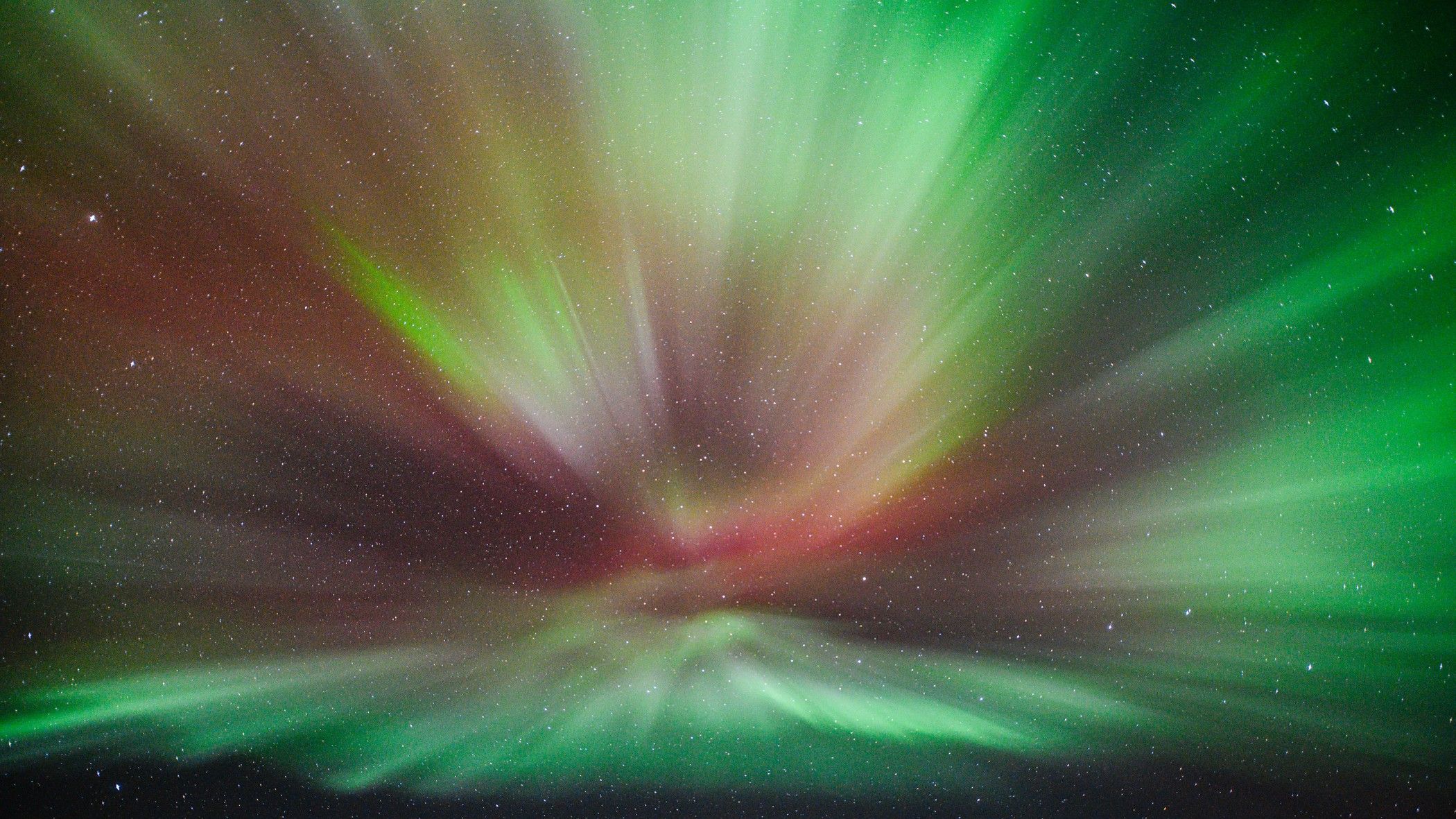Auroras may get stronger within the next 2 years as the sun enters a turbulent decline with a ‘last gasp’ finale

We may have passed the peak of solar maximum, but that doesn’t mean the aurora season is winding down. In fact, the years after solar maximum can be some of the most exciting for skywatchers.
Space weather physicist Tamitha Skov describes one potential late-cycle outburst as the sun’s “last gasp”, a dramatic finale that could trigger powerful geomagnetic storms and impressive auroras on Earth.
But even without that encore, scientists agree the declining phase of the solar cycle can be especially turbulent, and particularly good for aurora chasers.
The turbulent decline
Solar activity follows an 11-year rhythm, rising to a frenzy of sunspots and eruptions during a period known as solar maximum before easing towards a more subdued solar minimum. But Earth doesn’t experience this decline as a calm fade-out.
“It’s good news for aurora chasers as peak auroral activity occurs a few years after solar maximum,” Pål Brekke, solar physicist at the Norwegian Space Agency, previously told Space.com. “Thus, we should have several years still with very high aurora activity.”
That’s because the key drivers of geomagnetic activity change throughout the solar cycle. During solar maximum, eruptions such as solar flares and coronal mass ejections (CMEs) dominate. After solar maximum, long-lived coronal holes, cooler, darker regions in the sun’s atmosphere that release high-speed solar wind, become more common.
“During the declining phase, we actually have more geomagnetic storms,” Skov explained. “Maybe the sun’s actual eruption activity slows down a bit after you peak through solar max, but because you still have coronal holes forming — and you still have quite a few eruptions — when you add the two together, it ends up being more activity at Earth.”
Scott McIntosh, solar researcher and vice president at space weather forecasting company Lynker Space, describes this period as the overlap between the cycle’s “light side,” dominated by eruptions, and its “dark side,” dominated by coronal holes. “So in short the number of coronal holes increases for a few years post-maximum and this makes for a very complex space environment,” McIntosh previously told Space.com.
This overlap means Earth’s magnetic field can be hit from multiple sources at once, producing storms that may not be the most intense, but often last longer. Skov notes these drawn-out storms “may not be as intense as just the big CME, but they’re longer duration”, giving aurora hunters multiple nights of potential displays.
The sun’s ‘last gasp’
On top of the general turbulence, Skov highlights another late-cycle twist, what she calls the sun’s “last gasp.”
“Almost all cycles, if not every cycle… they all have these last gasps during the declining phase,” Skov said. “Typically, the last gasp will come within about two to three years before solar minimum. So, within about the next year and a half to two years, we should see something.”
These last gasps are usually driven by one or two highly complex sunspot groups that emerge late in the cycle. If such a region forms and faces Earth, and stays active across multiple solar rotations, it could release powerful, repeated eruptions earthward.
“The chances of us getting another big G5 with these last gasps are pretty high,” Skov said. “It all depends upon whether that sunspot emerges in and around Earth view, and whether it stays angry.”
G5 is the most extreme level on NOAA’s geomagnetic storm scale, capable of producing auroras deep into mid-latitudes. The May 2024 “Gannon Storm,” which lit up skies as far south as Mexico, was one such G5 event.
More than just pretty light shows
For satellites, navigation systems and communication technologies, these geomagnetic storms can be quite the headache. Prolonged radiation and geomagnetic activity can interfere with GPS networks, disrupt radio signals and damage spacecraft.
Related: Powerful solar storms are a nightmare for farmers. ‘Our tractors acted like they were demon possessed’
“Spacecraft anomalies occur because they’re just bathing in this high, radioactive bath of particles that doesn’t seem to go away,” Skov said.
But for skywatchers on the ground, the coming years hold promise. Between the messy decline of solar cycle 25 and the possibility of a dramatic last gasp, aurora hunters may still have their best nights ahead.
As Skov put it: “If we get in the crosshairs, we can see a very big event.”
The sun may be past its peak, but the finale could be spectacular.



